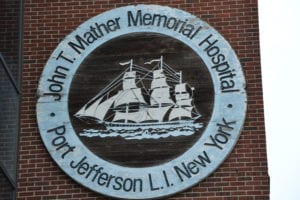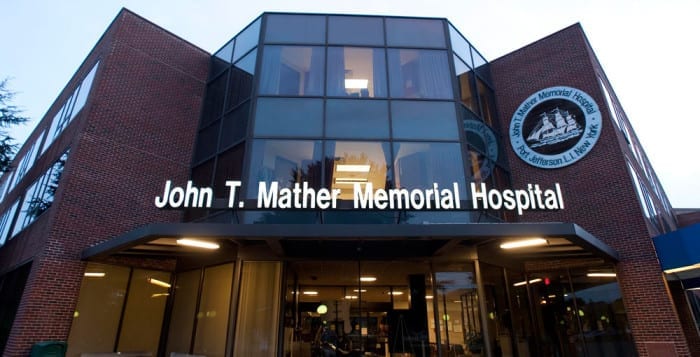New residency programs underway at Mather
By Kevin Redding
Under the sponsorship of Stony Brook University Hospital, John T. Mather Memorial Hospital in Port Jefferson has recently launched two new medical residency programs: one focused in psychiatry and the other in diagnostic radiology.
These programs, which officially joined existing residency programs, internal medicine and transitional year, on July 1, will serve to solidify Mather as an ever-expanding hub of academic training for its medical school graduates, and offer high-quality health care to its Suffolk County patients.
Both are four-year programs, offered to five residents per year in psychiatry and three per year in diagnostic radiology, that will give residents hands-on access to technology, clinics and patients relating to the specific field.
Those in the psychiatry program will benefit from Mather’s two inpatient psychiatry units for adults and adolescents and various clinics, including one for eating disorders and chemical dependency. According to Dr. Noam Fast, the program’s director, the residents will undergo an unusually didactic schedule, rotating between classroom lectures from the clinical faculty and working with patients directly — which will allow them to hone their craft.
“We’re training the next generation… and hopefully they decide to stay in our local community and actually treat our community members.” — Jared Dunkin
“Mather actually had a lot of psychiatry services and that is what you need to be able to train residents the right way,” Fast said. “You need all of these services, and when you have all these opportunities, it becomes the basis to teach. The patients benefit, the staff benefits and the hospital and community at large do, as well.”
Radiology residents will learn to understand and operate the inordinate amount of technology the field consists of. The residents must know how to read a wide spectrum of imaging, including X-ray, radiographs, MRI scans, CT scans, ultrasound and mammography.
Dr. Jared Dunkin, director of the radiology program, said that even though it will be a steep learning curve — using the computers and dictation systems — it’s something that students will be acclimated to in just a few months. Residents will also be learning the tools of the trade that can potentially prevent life-ending ailments within the body.
“For us, imaging is giving insight into what is going on in the body without having to cut them open,” Dunkin said. “It gives us a window into the organs just to come up with a diagnosis. There’s a lot of screening programs through radiology. They’re developing chest-screening programs, for instance, to identify people at risk for lung cancer. We try to identify these cancers early, so that way the doctors can treat them earlier.”
In order to find their residents, Fast and Dunkin used what’s called a “match,” an elaborate computer program used as an application process in medical circles. Medical students in their fourth year send in their resumes, transcripts, school test scores and recommendation letters. Fast and Dunkin then sift through hundreds of potential residents and narrow the candidates down to a select few for interviewing and ranking.

Then, on “match day,” the computer takes the list and pairs the students with a certain program. Usually, Fast and Dunkin have months to do this, but due to a late accreditation, they only had a little more than a week this time around. Even with limited time, the directors said they’re happy with the final selections.
The goal was to find those who are bright, dedicated, interested in learning and could potentially have a long-lasting career within Suffolk County.
“The residency programs are a lifeline for the community,” Fast said. “You have a chance to train residents in your own program, and then the expectation is that a proportion of the residents would be interested in this community, and we do hope that we can attract some of these doctors and recruit them, as well.” Dr. Joan Faro, chief medical officer at Mather, said last year that the partnership between Stony Brook and Mather, in forming a new graduate medical education program, would only strengthen the level of care the community hospital provides by reinforcing the facility’s standards. The new programs should take those standards to new heights.
Dunkin has an eye on the future of the hospital when speaking about the new programs.
“We’re training the next generation,” he said. “A lot of residency programs look to their former residents to fill the ranks when needed. So we’re training the next generation, and hopefully they decide to stay in our local community and actually treat our community members.”







